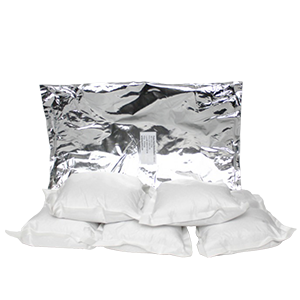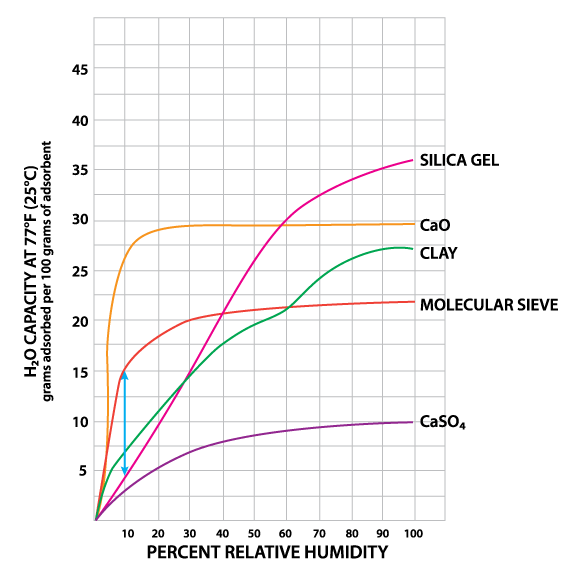
What Is The Desiccant Unit System?
The effectiveness of a desiccant can vary by quite a lot. Between traditional clay, silica (indicating or not), and synthetic materials like molecular sieve, how much you need to reach your desired moisture level will change. Even the source of the material can have an effect on the strength - montmorillonite clay from one part of the world might have different adsorbing rates and strength compared to another depending on the specific conditions in which it was formed. For this reason, a standard to measure the moisture capture capabilities was developed - the Unit System.


Simply put, a Unit is the amount of a desiccant required to adsorb 3g of moisture from a space with 20% relative humidity (RH), and 6g from a space with 40% RH at 77 degrees F. In doing so we can see that while all the desiccants can pull moisture from the air, the amount of the product needed to reach the same relative humidity (RH) level will vary. For high-performance materials like molecular sieve, you can get away with a much smaller packet to achieve the same results. For a traditional clay desiccant, while you would need much more in terms of desiccant weight to get to the same RH level, the lower costs more than offset the increased space requirements. The main downside to using clay is that some situations require limited space inside a container to fit all those packets.
Aside from accuracy, the other reason most manufacturers use the unit system is the United States Military. For military purchasers, it is difficult to buy outside the approved military spec for desiccants from 1/6th unit to 16 units (if you see an 80-unit pouch claiming to be military-grade, they are LYING). The standardization of the unit system helped ensure that they can rely upon the same results, every time. This reliability is worth its weight in gold to some customers, and a responsibility we take seriously.
